PREVIOUS
Chandrayaan Missions of India – Part I
August 26 , 2023
843 days
8552
0
(இதன் தமிழ் வடிவத்திற்கு இங்கே கொடுக்கவும்)
Chandrayaan 1
- The Chandrayaan-1 mission was ISRO’s first exploratory mission to the moon.
- It was designed to just orbit around the moon and make observations with the help of the instruments on board.
- The closest that Chandrayaan-1 spacecraft came to the moon was in an orbit 100 km from its surface.
- The Chandrayaan-1 mission made one of its instruments crash-land on the moon’s surface.
- It was the Moon Impact Probe, or MIP, a 35-kg cube-shaped module with the Indian tricolor on all its sides.
- MIP left an Indian imprint on the moon’s surface.
History
- In 1999, the Indian Academy of Sciences initiated an idea of undertaking an Indian scientific mission to Moon.
- Chandrayaan Mission was launched by the Indian Space Research Organisation (ISRO) and was India’s first mission to the moon.
- The spacecraft was launched on 22nd October 2008 by a modified version of the PSLV C-11 from Satish Dhawan Space Centre, Sriharikota, Andhra Pradesh.
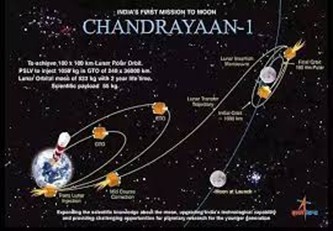
- The vehicle was successfully inserted into lunar orbit on 8 November 2008.
- This initiative was followed by a discussion with the Astronautical Society of India in 2000.
- Based on the recommendations, a National Lunar Mission Task Force was constituted by the Indian Space Research Organisation (ISRO).
- The index is a key international resource that measures acute.
Objectives of Chandrayaan 1
- To perform high-resolution remote sensing of the moon’s surface.
- To provide a three-dimensional atlas of the Moon (near and far side).
- To conduct chemical and mineralogical studies for mapping of the entire lunar surface.
- To test the impact of a sub-satellite on the lunar surface for its future soft-landing missions.
- The mission successfully detected the presence of titanium and calcium along with the accurate measurements of iron, aluminum and magnesium on the moon.
- The Chandrayaan Mission 1 ended on 28 August 2009 after the communications to the probe were suddenly lost.
- The probe lasted for 312 days.
- The estimated cost of this project cost was Rs.386 Crore or US$60 million.
- The recent images sent by Chandrayaan-1 suggest that the moon may be rusting along the poles.
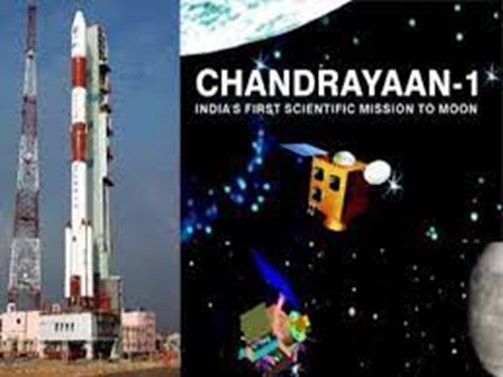
Findings of Chandrayaan 1
- It is operated for 312 days as opposed to the intended two years but the mission achieved 95% of its planned objectives.
- Confirmed presence of lunar water
- Evidence of lunar caves formed by an ancient lunar lava flow.
- Past tectonic activity were found on the lunar surface.
- The faults and fractures discovered could be features of past interior tectonic activity coupled with meteorite impacts.
- Data from the Mineralogy Mapper (M3), one of the instruments on Chandrayaan-1, indicates the presence of hematite at the lunar poles.
- Hematite (Fe2O3) is a mineral which is a form of iron oxide, or rust, produced when iron is exposed to oxygen and water.
- The sign of this finding is that even though the surface of the moon is known to have iron-rich rocks.
- It is not known for the presence of water and oxygen, which are the two elements needed to interact with iron to create rust.
- Recently, the National Aeronautics and Space Administration (NASA) have found evidence of greater quantities of metals such as iron and titanium on the moon’s subsurface.
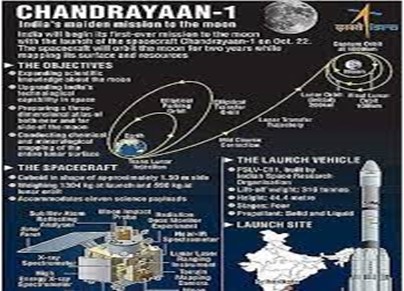
Possible Reasons behind Rusting along the Lunar Poles
- As per scientists at NASA, earth’s oxygen could be driving the formation of hematite.
- Earth’s magnetotail (elongated region of the magnetosphere of the earth) ferries oxygen to the moon and also blocks 99% of solar wind during certain periods of the moon’s orbit.
- The solar wind, a stream of charged particles that flows out from the sun, bombards earth and the moon with hydrogen.
- Hydrogen makes it harder for hematite to form.
- Chandrayaan-1 Moon data indicates that the moon's poles are home to water that scientists are trying to decipher.
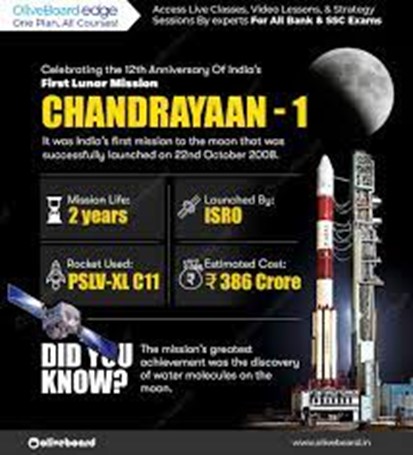
Way Forward
- The findings will reshape scientists’ knowledge about the moon’s polar regions.
- It also suggests that the Earth may have played an important role in the evolution of moon's surface.
- However, more data is needed to determine exactly how the water is interacting with rock.
- The Chandrayaan-1 spacecraft from India was a key component in the discovery of water molecules on the Moon.
- India’s first deep space mission was Chandrayaan-1.
- Its collection of sensors included NASA's Moon Mineralogy Mapper (M3), an imaging spectrometer that supported the finding of water trapped in lunar minerals.
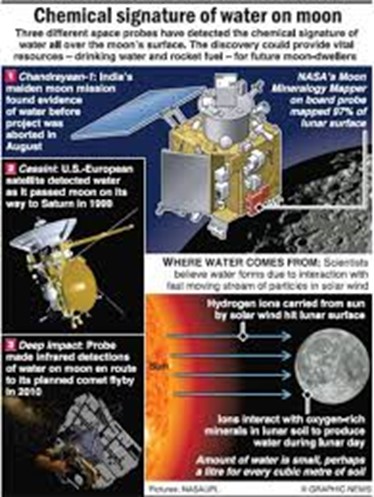
- The first Indian deep space mission, Chandrayaan-1, was launched with the intention of orbiting the Moon and delivering an impactor to its surface.
- The study of the Moon's chemical, mineralogical, and photo geologic mapping was one of the goals.
- The spacecraft also carried scientific instruments from the United States, the United Kingdom, Germany, Sweden, and Bulgaria in addition to the five Indian instruments.
- Chandrayaan-1 was launched into a geostationary transfer orbit with an initial distance of 140 x 14,180 miles (225 x 22,817 kilometers) and an inclination of 17.9 degrees.
- Finally, on November 8, during a burn that started at 11:21 UT and lasted roughly 13.5 minutes, the probe successfully entered lunar orbit.
- The initial lunar orbital parameters were roughly 7,502 x 504 kilometers (4,660 x 310 miles).
- Chandrayaan-1 gradually decreased its orbit between November 8 and November 12 to arrive at its operational polar orbit
- The orbit is located around 62 miles (100 kilometers) above the lunar surface.
- Chandrayaan released its 64-pound (29-kilogram) Moon Impact Probe two days later at 14:36 UTC (MIP).
- After using a small deorbit motor, the probe entered free fall and began transmitting data from its three sensors.
- At 15:01 UT, the probe fell onto the lunar surface close to the Shackleton Crater at the lunar South Pole.
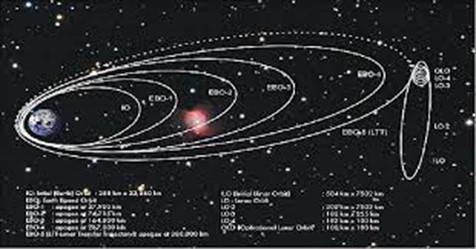
- Besides, ISRO also claims that while on its way, MIP had sent data that showed evidence for the presence of water on the moon.
- But unfortunately, those findings could not be published because of anomalies in calibration of the data.
- The confirmation for water had come through another onboard instrument, the M3 or Moon Mineralogy Mapper that had been put by NASA.
- Chandrayaan-1 is a more sophisticated mission with various objectives.
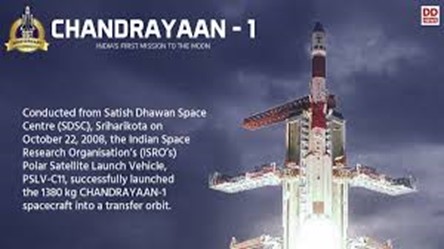
Leave a Reply
Your Comment is awaiting moderation.


